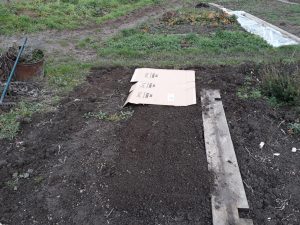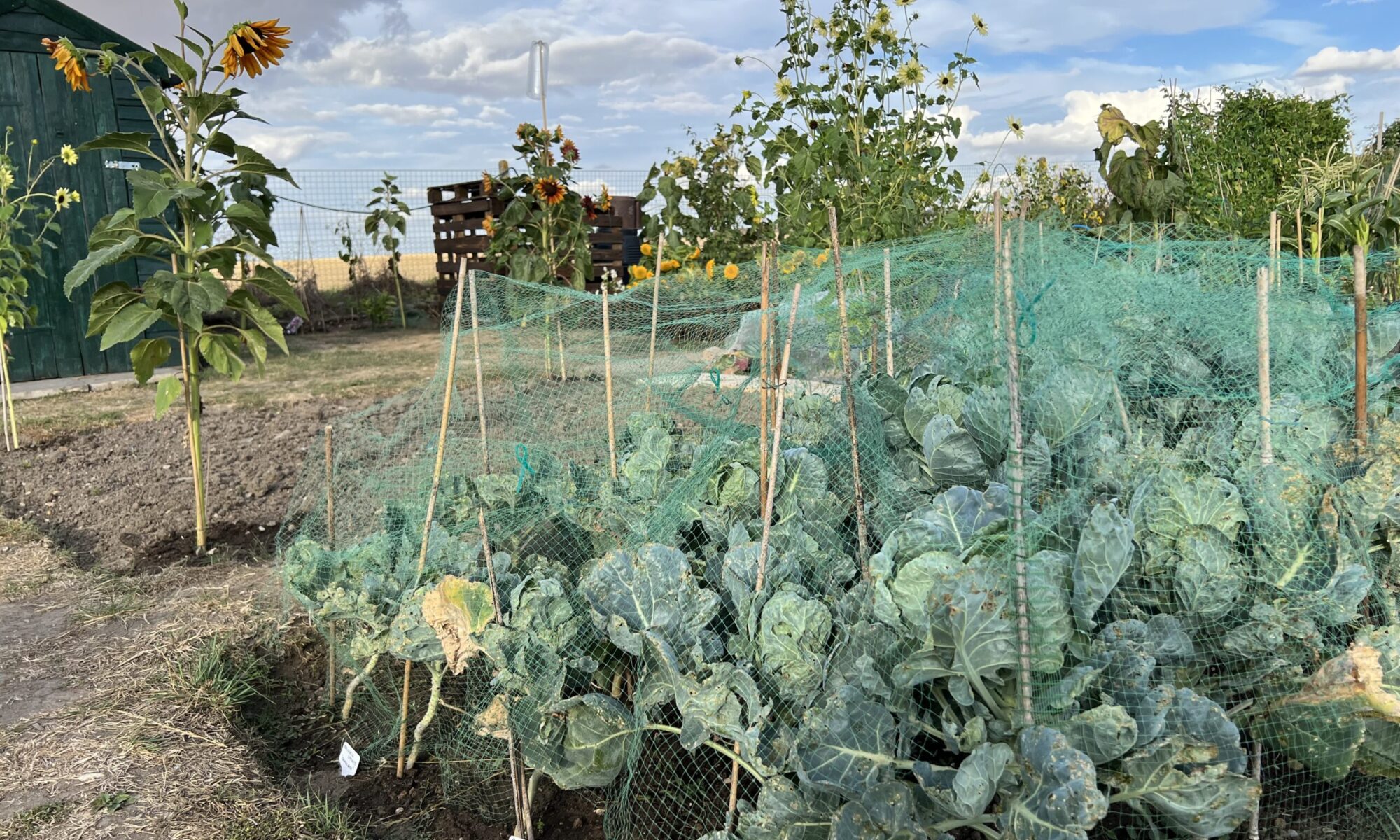Members may or may not have heard of this method of growing veg which has been espoused by Charles Dowding.
Clothall Road tenant, Annie, tells us more about it as we follow her on her ‘no dig’ journey.
‘I joined the library just before Christmas – I wanted learn more about pruning. What I found, was a book on compost. I like making compost. It’s very satisfying on so many levels. Perhaps that’s another diary thread for another time……but the compost book contained a chapter about no-dig gardening. How could that fail to catch the eye? That would be the best gardening revolution ever!
Several hours with Mr. Google followed, plus the chance arrival of an assortment of cardboard, and a few hours of free time over the Crimbo Limbo period. Fate decreed this was definitely worth a try.
Rather than try and convert the sceptics with technical persuasion (that can appear in later episodes), I shall just explain what I’ve done so far. Suffice it to say, ‘no-dig’ seems to mimic natural processes and therefore cannot be ‘wrong’.
One benefit of no-dig is to reduce weeding and the first step towards this is ‘sheet mulching’. I raked over a patch of ground (you can take out deep-rooted weeds if you like but this isn’t essential). Then I spread cardboard over the area. You can wet the cardboard but the ground right now is probably wet enough! Newspaper can be used instead of cardboard.

Then I covered the cardboard with a thick layer of compost (about 3 inches). I guess you could leave it at that, but in my garden the birds fling compost all over the place, so I covered the compost with whatever I could find – some bits of fleece, and old pea netting.

You could use black plastic but that would also keep the rain off. Aims of this mulching are twofold, firstly the mulch prevents light getting to weeds thus eventually killing them and secondly mulch gradually decomposes and is drawn down into the soil by worm activity.
Next time I shall explain ‘the path dilemma’ and hopefully tell what my solution will be.’

